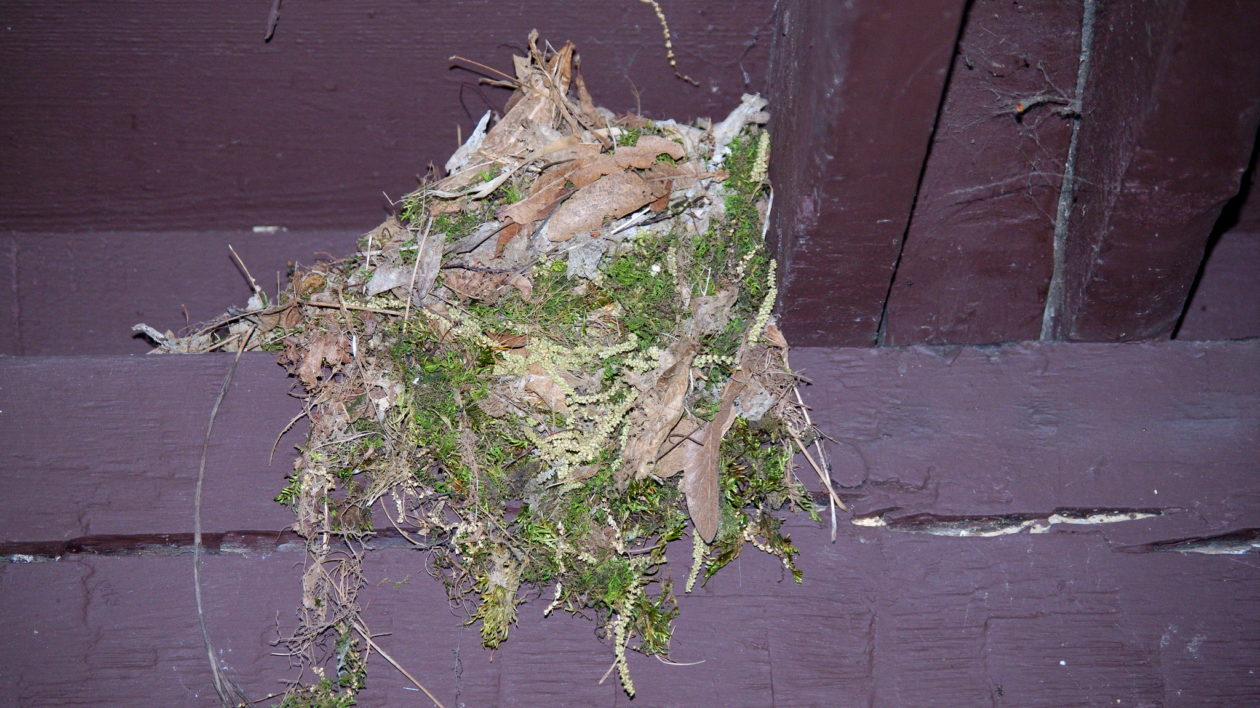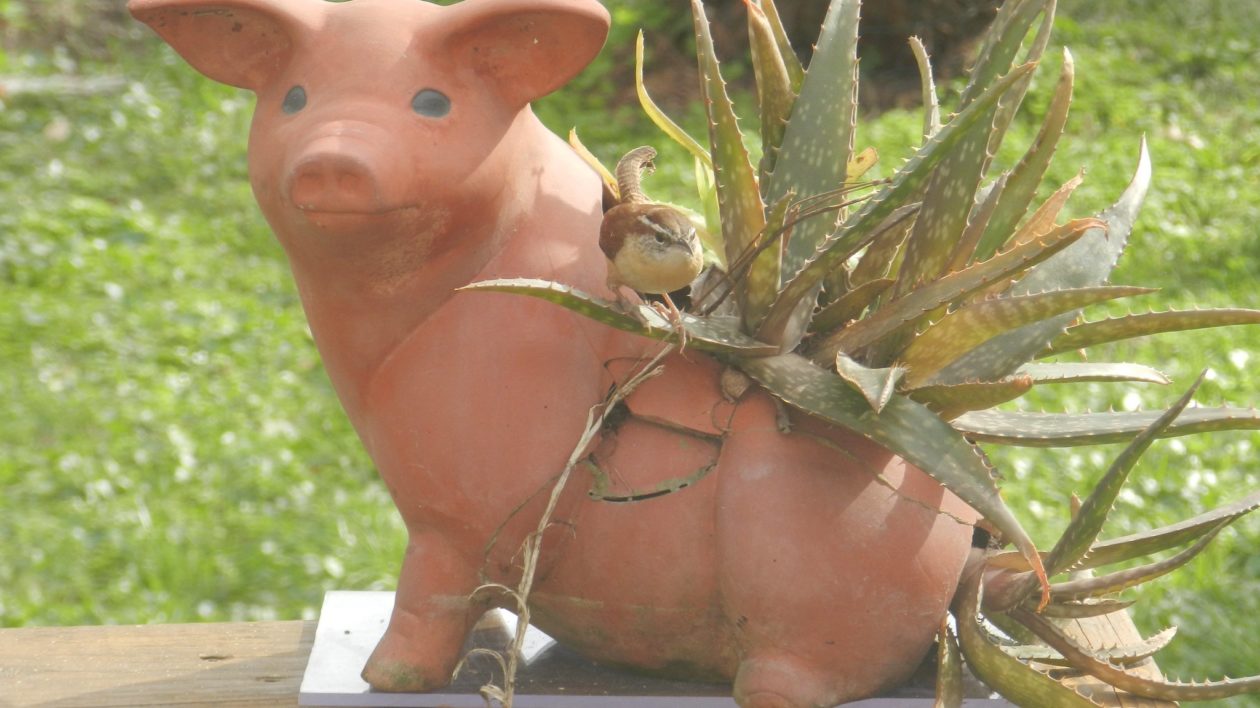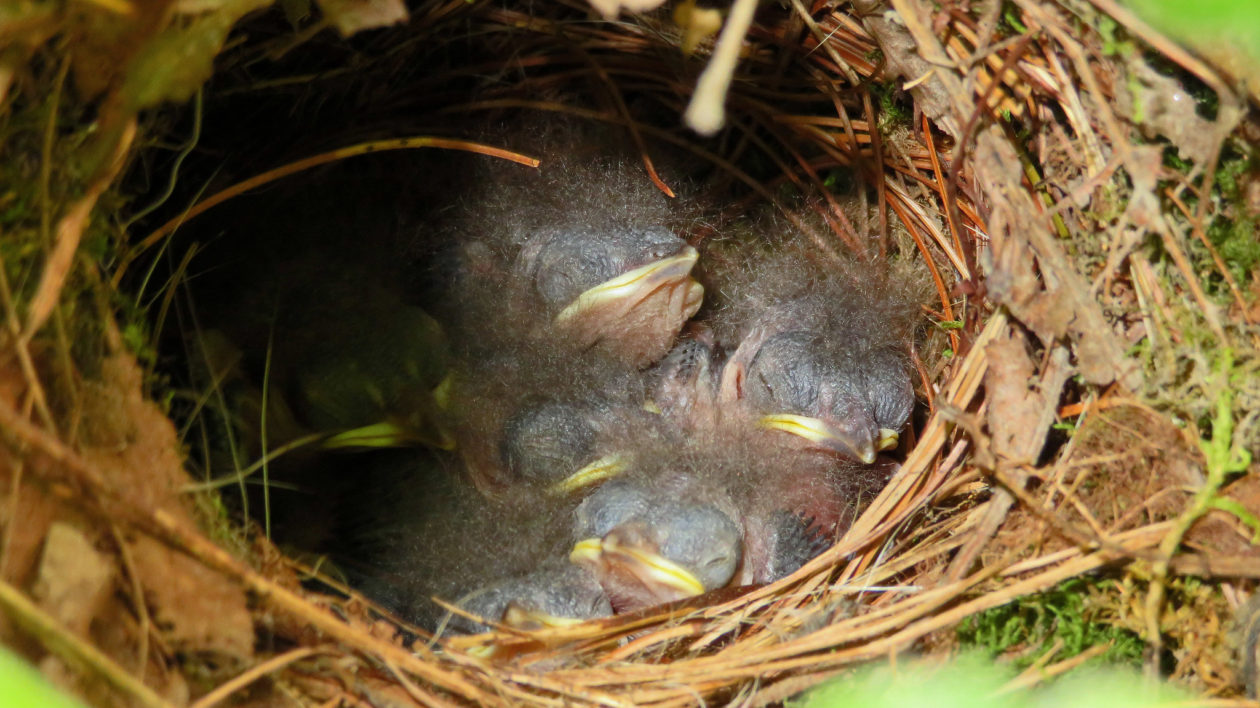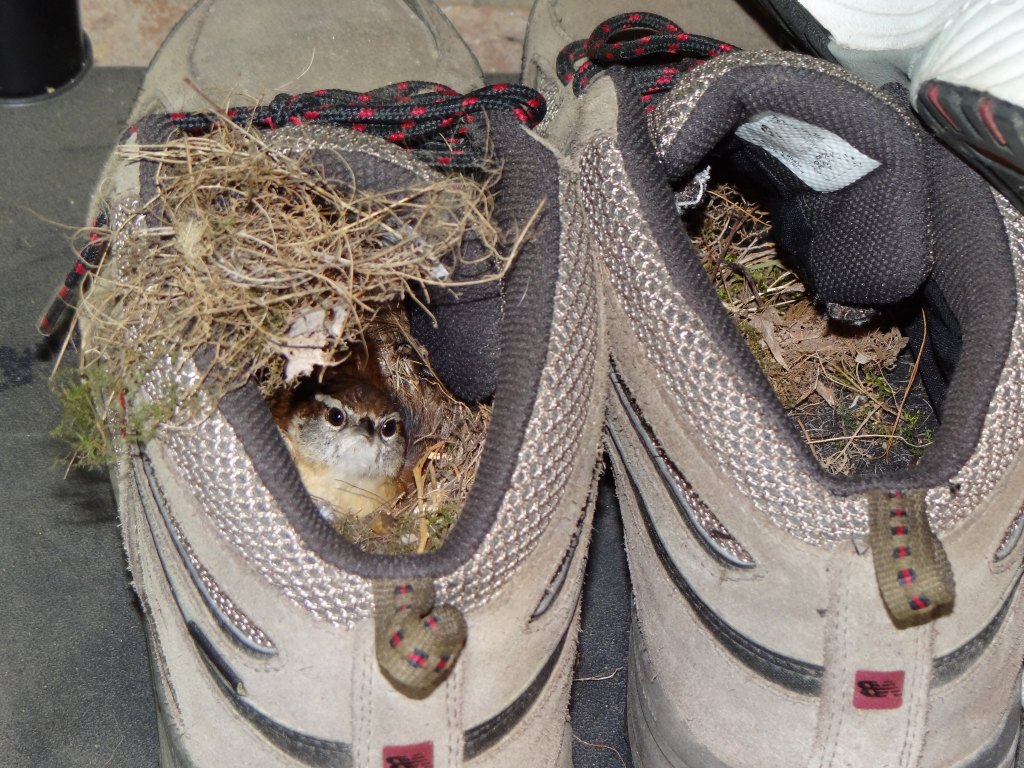You probably wouldn’t be surprised to find a bird nesting in a huge pile of sticks and brush.
To find a nest, or two, in your garage, your grill, or even in the spare tire of your jeep? Now that’s another story. The culprit? It’s most likely the doing of a Carolina wren.
This cavity-nesting, insect-eating, chestnut and cinnamon-colored bird weighing less than a soup spoon seems to know no boundaries when it comes to choosing a home. Sometimes, we might even wonder if our efforts to provide nest boxes and brush piles somehow fail to meet the Carolina wren’s creative standards.
Sometimes it’s as if they ignore the tidy nest and pick propane hoods and the insides of muddy boots instead.
As I wrote in a previous blog, the Carolina wren has adapted quite well to cities and suburbs. And one of the reasons is its willingness to nest in, well, just about anything.
But why do the wrens seek human objects for nesting?

Of Nest Boxes and Brush Piles
Let’s start with nest boxes and brush piles.
During the breeding season, a breeding pair may seek out a nest box, a human-made enclosure frequently utilized for birds to build their nest. Putting up a nest box before the breeding season is vital; this way, the pair will be familiar with its location and know that it is available for their use.
Along with nest boxes, wrens seem to favor what brush piles have to offer. Brush piles give them a quick place to flee from predators. They also provide a potential nesting spot as well as a source for bugs and other critters that Carolina wrens may eat.
Brush piles and nest boxes offer wrens a more convenient (at least for us humans) place to build their nests, though it seems that even with our efforts, wrens may still prefer our mailbox over a nest box. Though classified as cavity-nesters, it seems that Carolina wrens usually forsake tree cavities and nest boxes in favor of more unusual nest sites. In fact, it is leaving some avid birdwatchers, like Amber Silfies, quite confused, yet intrigued.
“We are unsure of why the change; there has been no change in landscaping other than some maturity in shrubs,” she says. “Also in spite of provided nesting boxes, this behavior continues.”

The Nest in the Mailbox
The nest of a Carolina wren is relatively bulky and can be made of various debris such as leaves, hay/grass, twigs, moss, and even strips of bark. They are very versatile nesters and have gotten creative when it comes to their nesting locations. One recent study noted some to build their nests in garden pots. They have also been known to nest in other peculiar places such as mailboxes and even shoes left outside for long periods of time!
It even seems that when the garage door gets left open for long amounts of time, wrens will be busy at work.
“We’ve lived in our home in suburban Atlanta for14 years and we have spent every spring and summer chasing Carolina Wrens from our attached garage” says Silfies. “If the garage door gets left open for more than a couple of hours they particularly like starting nests in our reusable shopping bags hanging from a rack or finding nooks and crannies in shelf storage areas.”

Spares tires also seem to be a favorite of wrens.
Dr. Jeremy Hyman, biology professor at Western Carolina University, recalls when one happily chose his spare tire as its nesting spot.
“I live in a very rural, highly forested neighborhood, and the last 2 years in a row, Carolina wrens have nested successfully in the spare tire on the back of my car. Luckily, I didn’t have to drive much this summer.”
Indeed it seems that Carolina wrens are a very curious species, being able to get almost close to humans by exploring and utilizing our objects is fascinating.
“Perhaps Carolina wrens’ habit of exploring human objects and structures for food predisposes them to be unafraid of unfamiliar objects,” says Hyman, who also completed his PhD work studying Carolina wrens.
So why exactly do wrens do this? Well, there is no clear answer, but there are speculations. They may feel safer being close to humans and certain objects may help them to stay hidden from predators. Or these unusual objects may be convenient for a wren. From the wren’s perspective, there really seems to be no difference in occupying other objects aside from nest boxes and brush piles.
So the next time you go to move your flower pots or put your feet in shoes that have been left outside, check inside first; there may be a wren renting.




Though I have looked at my bush mandevilla in its pot many many times, I only realized today that there is a wren nest in there with four eggs! I really hope they are house friends and not Carolina wrens because this pot is only 12 ft from my head where I sleep at night on the porch. And I am sick and tired of being woken up by screaming Carolina wren. Still, it will be fun to watch baby birds in there.
My husband left his yard work pants hanging on a nail on our patio, and to our surprise, a family of Wrens has chosen to build a nest in them. The baby Wrens hatched about a week ago, and now we find ourselves spending countless hours sitting outside, mesmerized by the non-stop feeding frenzy as the parent Wrens tirelessly n their hungry offspring. It’s truly fascinating to witness this beautiful display of nature right in our own backyard.